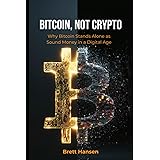Bitcoin: The New Digital Gold with 10x Potential, According to the Winklevoss Twins
In a dynamic financial landscape, the conversation around digital assets continues to evolve rapidly. For over a decade, Tyler and Cameron Winklevoss, co-founders of the prominent crypto exchange Gemini, have been staunch advocates for Bitcoin’s transformative potential. Their unwavering conviction, first voiced when Bitcoin traded at a mere $380, posits Bitcoin as the definitive “Gold 2.0,” poised for significant appreciation. As detailed in the accompanying video, the twins articulate a compelling vision where Bitcoin could easily achieve a 10x surge from current levels, fundamentally disrupting traditional investment paradigms.
Their journey began years ago, long before cryptocurrency entered mainstream discourse. Their foresight led them to establish Gemini, an exchange designed for secure and accessible entry into the nascent digital asset market. Today, with Gemini having successfully priced its IPO, valuing the company above $3 billion, their initial predictions about the digital asset revolution are manifesting. This steadfast belief in Bitcoin’s intrinsic value, particularly its role as a superior store of value, remains central to their outlook and serves as a critical perspective for investors navigating this burgeoning market.
Understanding Bitcoin’s “Gold 2.0” Thesis
The concept of Bitcoin as “Gold 2.0” is not merely a catchy slogan; it represents a deep understanding of monetary history and technological innovation. Historically, gold has served as the ultimate hedge against inflation and economic instability due to its scarcity, durability, and universally recognized value. However, Bitcoin introduces several enhancements that make it a compelling successor in the digital age.
Bitcoin boasts a strictly limited supply of 21 million coins, a scarcity enforced by its cryptographic protocol, unlike gold, which can still be mined. Its digital nature allows for unparalleled portability and divisibility, enabling seamless transactions and storage across borders without reliance on physical infrastructure. Furthermore, Bitcoin’s decentralized network provides censorship resistance and transparency, offering a level of financial autonomy unattainable with traditional assets. These fundamental characteristics collectively establish Bitcoin as a superior, digitized form of value storage, attracting investors seeking robust inflation hedges in an era of unprecedented monetary expansion.
The Path to $1 Million: A 10x Prophecy
Cameron Winklevoss boldly predicts that Bitcoin could reach $1 million per coin if it effectively disrupts a significant portion of gold’s market capitalization. This prediction implies a substantial 10x growth from current market valuations, transforming the digital asset landscape. To contextualize this ambitious forecast, consider gold’s approximate market capitalization, which hovers around $15 trillion. If Bitcoin were to capture even half of this value, its market cap would reach $7.5 trillion. With its fixed supply of 21 million coins, this would indeed push Bitcoin’s price well beyond the $350,000 mark, moving closer to the $1 million target as it absorbs more traditional investment capital.
This potential revaluation stems from Bitcoin’s superior attributes as a store of value. Data from institutions like Fidelity Digital Assets suggests that as more institutional investors recognize these advantages, capital will increasingly flow from traditional assets like gold into Bitcoin. This shift is not just about adopting a new technology but acknowledging a more efficient, secure, and globally accessible store of wealth.
The Expanding Crypto Ecosystem: Beyond Bitcoin
While Bitcoin stands as the foundational digital asset, the broader cryptocurrency ecosystem has witnessed explosive growth. Gemini, originally a Bitcoin-only exchange, now supports over 100 tokens, reflecting the rapid diversification of the industry. This expansion includes prominent cryptocurrencies like Ethereum (Ether), which powers a vast decentralized application ecosystem, and Solana, known for its high-speed transactions. Stablecoins, digital currencies pegged to fiat currencies like the U.S. dollar, have also become integral, facilitating smoother transactions and acting as a haven during market volatility.
This burgeoning ecosystem is not confined to trading. Innovations like Project Crypto by the SEC aim to integrate traditional markets with blockchain technology, a future Gemini is actively powering through partnerships with entities like Nasdaq. This evolution underscores a move towards a tokenized economy where various assets, from securities to real estate, could be represented on blockchain ledgers, enhancing efficiency and transparency across global financial markets.
The Gemini Credit Card: Future-Proofing Your Spending
A standout product highlighted by the Winklevoss twins is the Gemini Credit Card, which offers up to 4% back in Bitcoin or other supported cryptocurrencies on every purchase. This innovative rewards program fundamentally redefines how consumers view their daily spending. Instead of earning depreciating cash back or obscure points, users accumulate digital assets that possess appreciation potential. Tyler Winklevoss elaborates that buying a flat-screen TV today could result in earning Bitcoin that, in the future, might be worth more than the original purchase itself.
The economics of this card are particularly compelling for long-term investors. Consider this: if Bitcoin indeed achieves a 10x valuation, a 4% reward today effectively becomes a 40% return on your purchase over time, assuming you hold the crypto. Some merchant offers even provide up to 10% back, meaning such a purchase could hypothetically become “free” if Bitcoin reaches its predicted 10x increase. This mechanism allows individuals to passively invest in their financial future without altering their spending habits, contrasting sharply with traditional reward programs where value typically erodes over time.
Bitcoin’s Fixed Supply and Halving Cycles
A core tenet of Bitcoin’s value proposition is its predictable and fixed supply schedule. Unlike gold, which is subject to fluctuating mining outputs, Bitcoin’s supply issuance is algorithmically controlled and halves approximately every four years, an event known as “the halving.” Tyler Winklevoss noted that two more havings are anticipated within the next decade, further constricting new supply.
These halving events reduce the block reward miners receive, ensuring that fewer new Bitcoins enter circulation. While this mechanism decreases the subsidy for miners, their revenue shifts to transaction fees as network usage grows. This dynamic ensures the security of the network while maintaining Bitcoin’s scarcity, a crucial element for its long-term viability as a store of value. The fixed supply distinguishes Bitcoin from fiat currencies, which can be printed endlessly, and even from gold, whose supply is not absolutely finite, cementing its position as a superior inflation hedge.







